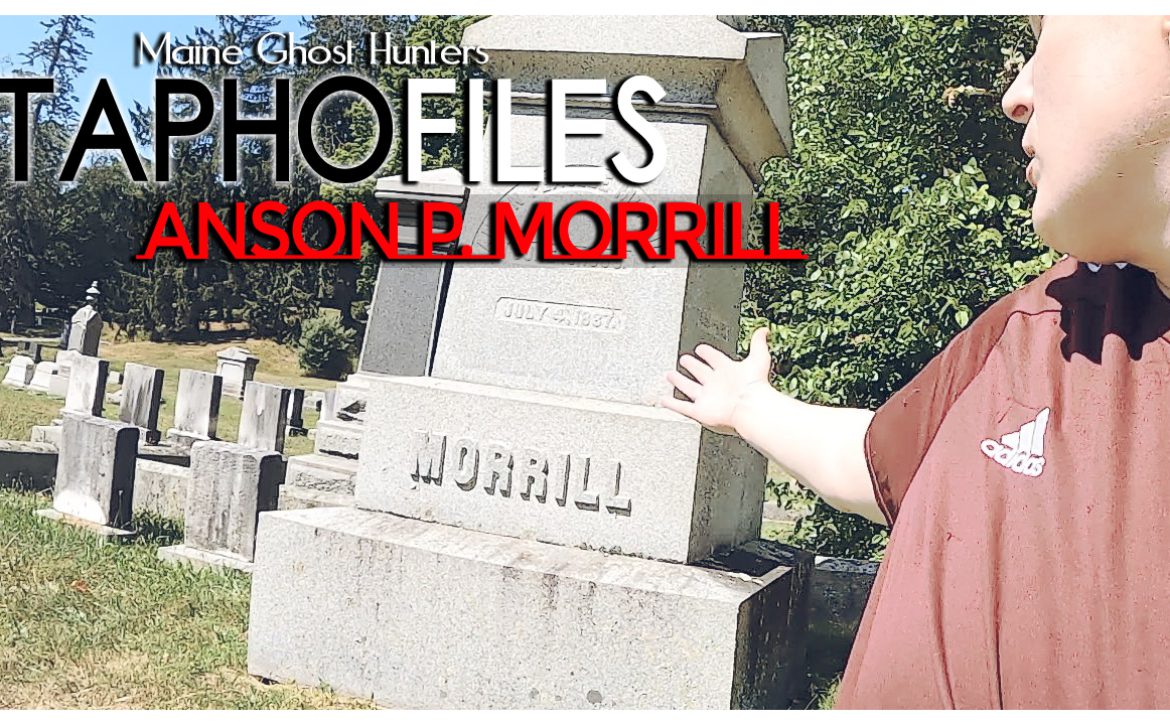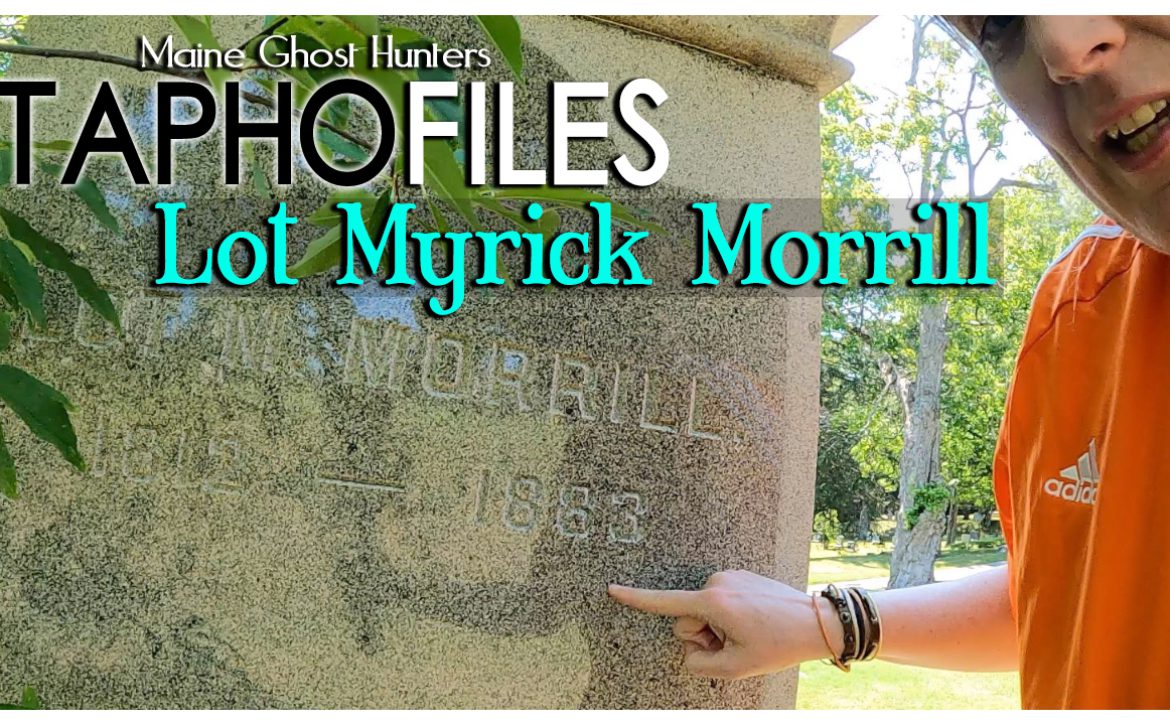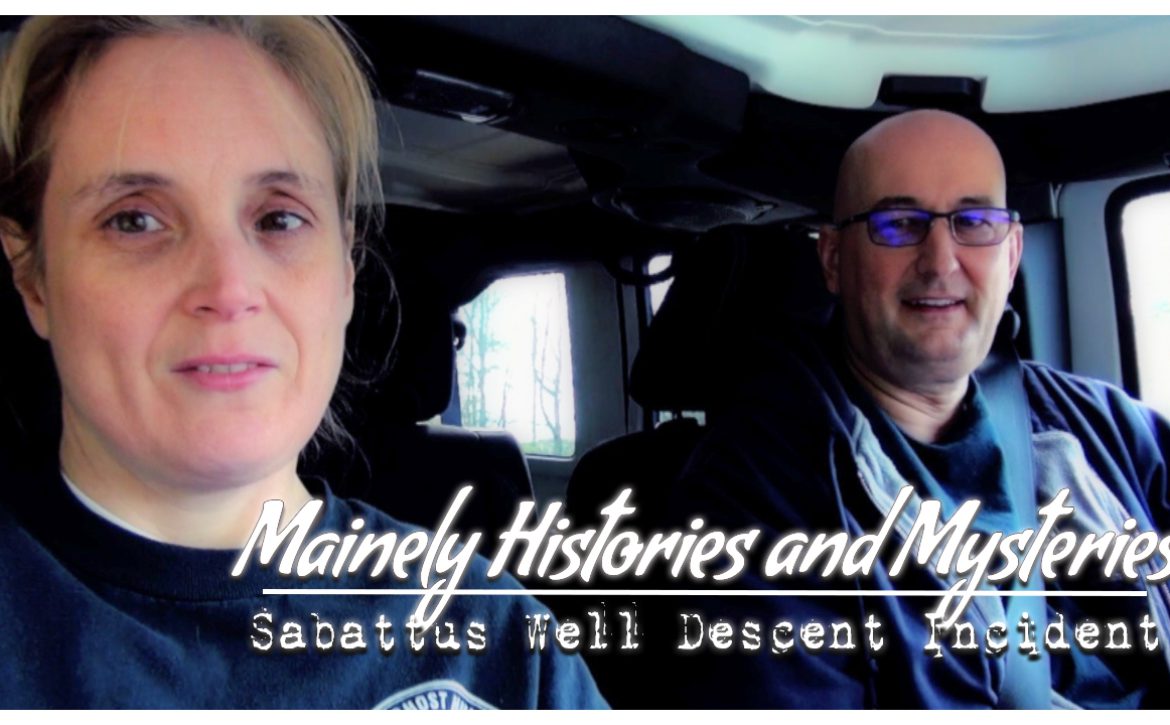Maine’s Lost Governor
He died while in office, was buried with full honors, and his body subsequently – lost… Where did Enoch Lincoln’s body go?
He died while in office, was buried with full honors, and his body subsequently – lost… Where did Enoch Lincoln’s body go?
This legend has been told for decades … but is it true? Join us as we investigate…
Introduction
We’re heading out to the mid-coast town of Edgecomb, Maine. Population 1,200, give or take. There’s a ton of history in this sleepy little community and while most of it’s celebrated, there are some events the locals have lost through time. In this case… have lost on the side of a mountain. A gruesome massacre leaving 6 dead, buried in graves that were dug before the murders took place. These days the story is scarcely remembered by the older generation, but the rumor about town is the killings were done with either a gun or a knife. We’re about to take you back to the 1800’s and tell you exactly what the press and first person witnesses had to say happened at the top … of Mount Hunger.
Historical Information
Mount Hunger is more of a hill than a Mountain, but since it’s the highest point in the area it’s known by the locals as “Mount Hunger”.
Mount Hunger was settled during at time when England needed masts for their ships, so they dropped people off in the New World to cut timber and serve the crown. People originally landed, quite literally, in a place called “Salt Cove” here in Edgecomb, but they quickly made a permanent settlement of houses up on the highest peak in town, and that’s on top of Mt. Hunger. Actually “Salt Marsh Cove” (I added this fact later, on 11-7-2017)
Up on Mt. Hunger there was very little tillable soil. As a matter of fact, when settlers started building houses up here there were no basements dug because they couldn’t get that far down into the dirt before they hit something hard and impenetrable. The people who settled the top of Mt. Hunger were a sort of 2nd generation settler in this region. By the time they got here there was no more land available to buy down by the water, so they had to buy wherever was available and whatever they could afford. These people were foresters and farmers, and that’s important because they’re used to living off the land. They probably weren’t used to making a living off other people, other than selling what they grew or cut.
These are the people that wound up with the land on top of Mt. Hunger.
As already stated, the land lacked planting soil, and so you can bet there weren’t any big trees up there either. This is where the tragedy starts to form.
The earliest settlers landed here by order of King George – be it George II or George the III. The point is, they were here before the Revolutionary war. Which means well before 1776.
By the time this next generation of settlers of Foresters and Farmers had arrived, the plantable land was taken, and all the large pines had been cut and sent off to England to be used as masts in the King’s Navy. So, the people who bought land up on Mt. Hunger were either highly capable at some sort of trade or business that allowed for them to sustain themselves by the work of those in the lower lands, say, for food as an example – since this area *is* called Mt. Hunger – or they were very poor and sustained themselves by means that never really allowed them to get comfortable, let alone “get ahead”. They were always in a life or death game of survival up here by the time the mid 1800’s rolled around.
It’s these circumstances that brought 1 man to commit a travesty unto his own family that was so horrible we’re sure it’s left a permanent mark on this land.
The Tragedy
On May 11, 1848 George W. Pinkham took an axe to his wife and his 4 children. The oldest was 11. The youngest was 1. George’s mother is the one who found them all. They were all in their beds. The children’s eyes were closed and they were all pretty much decapitated. Their heads were still connected, but just barely. Their eyes were all closed, which made the investigators think they were all sleeping when they were struck. They never saw it coming.
George’s Wife was found half dressed, laying in bed in the same general condition, with her head nearly severed – but her eyes open. George was found dead also, having slit his own throat from ear to ear with a razor blade.
The Reason(s)
You’re probably asking “Why”. Why would someone do this to their family?
Some say they were starving to death up on Mt. Hunger. Some say George, and for that matter, his wife Lydia both had ongoing issues with mental instability. Others held firm to the notion that both George and Lydia were firm believers in a “Second Coming of Christ” religion known as “Millerism”.
Accordingly, they would have believed that suffering here on Earth meant a sure place in Heaven, and George was making martyrs of his family by moving them into the afterlife before Christ arrived on this Earthly plane – giving them eternal salvation.
The Neighbors
It was a tight little community up on the hill… and after reading these religious claims in the newspapers, as the reason for the murders, Pinkham’s neighbors – from the Free Will Baptist Church – came out in droves to denounce the notion, fully and emphatically.
They adamantly stated that not only was he not a believer in Millerism, he wasn’t a believer in anything. He was, as they said, “an infidel”. They even went so far as to voluntarily write a sort of Affadavit to attest to the fact that he was not, at all, an Adventist, which is a believer in the second coming of Christ. But that he was, in the past few years, not himself – claiming him to have been having fits of insanity for stretches of time.
Back then people were involuntarily committed to mental institutions for acts of insanity, including for holding opposing belief structures and denying the bible – which Pinkham did, publicly and without remorse. So we have to wonder just how truthful the “insanity” claim really was, considering they were all Baptist, themselves.
They also cleared up some more misinformation in the original telling of the murders as was printed in various newspapers.
George was originally stated to be a ship carpenter, making it seem as though he worked under someone else. But this was not true. He was, as the neighbors stated, a “Ship Master” – which we’re assuming to mean “Captain”, since documentation and genealogic research has him titled as “Captain”.
George was a prosperous Captain and Lydia came from a highly respectable family.
They weren’t starving up on “Hunger Hill”, as some call it today. At least not because they didn’t have a choice. They were eating a very strange and strict diet because George had taken to believe that the “regular” foods people eat cause depression and ‘destroy’ us. So his options were to starve or be destroyed by the food he and his family were forced to eat – because he couldn’t easily obtain the foods his strict diet required – or to take their lives himself. And, so that’s what he did.
The Wife
Somewhere along the line it was proposed that both George and Lydia suffered from bouts of insanity over the course of the last few years of their lives, but no examples of insanity were given And the reasons for suggesting insanity could be as simple as “George changed his diet and decided he didn’t believe in God or the bible anymore”.
Lydia was known to be a God Fearing “perfectionist”. Worshipping the Lord as was her duty to do so.
One member of Edgecomb’s selectboard actually suggested that George was fine until he married Lydia, and that his instability was caused by her religious fanaticism. Further suggesting he committed this heinous act of murdering his entire family because Lydia led him to do so.
Did Lydia give her permission for her own death, and the slaughter of her family?
A suicide note was found at the scene of the crime, and the first part was determined to have been written in a woman’s handwriting. The note wasn’t signed but those involved believed it to be the handwriting of Lydia. The last part was signed by George. The letter stated: [READ SUICIDE NOTE which is attached]
So, why are we blogging about this hill?
We’re blogging about Mount Hunger because, for years, hunters have heard strange sounds of screaming and crying from – what sounds like – little kids, and women.
People have walked the trails and woods up here and have had strange encounters with strong feelings of being watched, or having feelings of dread, suddenly and without apparent reason.
We have even been told of one person having a direct sighting of a strange looking apparition which happened ahead of them on the trail. The apparition appearing solid but looking not fully formed – something between a person and something else… something they couldn’t really describe. They stood an uncomfortable distance apart from each other and after being distracted by their dog, to look away, when they looked back, the figure was gone.
Conclusion
We hope you found our presentation of Edgecomb’s Mount Hunger to be informative and we encourage you to walk the River to River trail and experience these woods for yourself.
We think the burial plots of the 6 deceased are up there on the his hill somewhere. It’s not a family tomb as requested in their suicide note, and it would take some searching around to locate the graves, but if you find them, please take photos and video and reach out to us. Let us know where they are so we can pay our respects.
Remember to honor the dead in this area. They lived in a time, and with hardships, we cannot imagine. Their deaths are a testament to that fact. There is no judgment for what was done. That time has long past and it isn’t our place to do so.
If you’ve ever had a reason to fear jumping into the natural waters of Maine, the likely existence of mysterious cryptids is probably why. Ocean or Lake, stories of water dwelling beasts of all kinds have been tales told for centuries, and generations, so naturally – we’re diving into the research to tell you what you need to know to stay safe on dry land or – if you’re anything like we are – down for some underwater adventure!
The Pocomoonshine Lake Monster goes by a few different names, including the Chain Lakes Snake, Poco, and the Chain Lakes Monster. It’s said to be 30-60 feet long, and when it travels on land, leaves a trail on the ground 3 to 4 feet wide, like an eel or a snake would. The bulk of the body is rarely seen out of the water, but witnesses claim it is best compared to a large snake.
Although it was first recorded as being witnessed in the 1880’s the Passamaquoddy Legend it’s most closely associated with has been around much longer. As a matter of fact, the Passamaquoddy had left drawings of water serpents, carved into shale, as far back as 3,000 years ago, and they long have held in high regard a legend involving famed Penobscot shaman, Old John Neptune, called “The Fight with Wiwiliamecq”.
The Legendary account puts the great Penobscot shaman, John Neptune, in direct battle with a Micmac chief at a lake the Passamaquoddy call “Neseik” – which means “muddy from the great fight”. During the altercation Neptune turned himself into a giant horned snail, known by the Passamaquoddy as “wiwiliamecq”, and the Micmac turned himself into a supersized snake, 40 feet long. The battle ensued in the lake, and John Neptune emerged the victor, after which he tied the body of his defeated adversary to a tree beside the lake for all to witness.
There have been numerous documented accounts of locals seeing tracks, trails, and remnants of the Pocomoonshine Lake Monster as it slithered from one nearby lake to the next, and even a couple of potential sightings, but all date back to the late 1800’s and our research has uncovered no sightings more recent or relevant to today’s time.
Things we think you should know about “Poco”, the Chain Lakes Monster
By all accounts and reports, Poco is not aggressive and will not approach people.
Unlike other sea or lake monsters, Poco is not restricted to water. It is known to travel from lake to lake within the Chain Lakes region, by way of land.
Its body may be most easily described as “snake like” but when it moves on land it moves more like an inchworm than a snake.
Poco’s skin is also somewhat snakelike, a darkish Olive green in color, but it has no scales, and it glistens with a sort of oily rainbow tint when the sun hits it just right.Tracks left by Poco have offered evidence suggesting it has flippers for feet. These flippers help Poco inch along on land and ice, but also give it high maneuverability in the water.
Our Theories about Poco
Poco could be a tall tale told by back woods residents hoping to scare away people looking to move their families or businesses into the area. It’s happened plenty of times in the past, with other “legends”, and since Poco seems to have disappeared altogether after its initial, and very brief, appearance in Washington County’s oral history, we suppose this theory is a quite plausible one.
Poco could have been a real, living, breathing, biologic organism of some sort, which people did witness and which did leave tracks of its presence. And, it could have died – which would explain why there have been no witness accounts more recent than the late 1800’s. Based on its description by witnesses, and by the tracks its been said to have left behind, Poco could be a plesiosaur like Nessie (the Loch Ness Monster) or Champ (of Lake Champlain here in the US) – are thought to be. What’s more interesting about this theory is that it was explained, back in the 1800’s, as resembling modern day Nessie & Champ descriptions by people who were, by all reasonable accounts, very likely unaware of the existence of Nessie or Champ. Poco could have disappeared from our historic memory but still be alive today, remaining solitary & elusive, just as Nessie and Champ are thought to be, today. The fact that Poco calls a sparsely populated area of Maine “home” makes this theory even more plausible. If there are not many possibilities for witnesses to see Poco it stands to reason there will be less opportunity for Poco to be seen. Poco is known by the locals to be a gentle giant; a toothless and harmless legend of Maine’s Washington County; which has guarded the waters of the Chain Lakes region for centuries, and has never brought harm to any person or animal in its documented history. If you should encounter “Poco”, The Chain Lakes Monster, we hope you can come away with some photographic evidence or, better yet, some video. And if you do, we’d love to hear from you!
Lost and Buried treasure in Maine? Some say it’s more than just legend so we’re digging into our home state’s history to find out.
When someone brings up the topic of “pirates” (arrr matey!) you probably immediately think of warmer climates – Bermuda, Nassau, the Caribbean, and even the southern coastal waters of the United States, like Florida and the Carolinas. But up here in Maine we have a secret:
Pirates knew about our state’s rough and rocky coastline, and while most avoided it – viewing it like the shipwreck graveyard that it was – (Davey Jones’ locker is not an ideal vacation destination) a few made it a point to pay us a visit. It’s quite a surprising fact, since the rough, choppy seas and unforgivably cold water temperatures during all times of the year – even in summer – would seem to be good reasons to avoid the Northern reaches of the East Coast. But, to an opportunistic pirate who’s being chased for the bounty placed on their head, and the recovery of the stolen loot they were carrying, the foggy waters and thousands of islands hidden off the coast of Maine were the perfect places to escape, and if all went well, made great places to “disappear into the night”.
There are well over 4,500 documented “islands” off the coast of Maine. The larger of which are hundreds of acres and the smallest of which are less than a half-acre and can only be seen during low-tide or when rough waters crash upon their shallow ledges. Navigating the treacherous waters off the coast of Maine could be a deadly decision or a risk with a huge payoff.
So let’s talk about a couple of pirates rumored to have left a stash here in Maine so impressive we’re thinking of becoming Treasure Hunters.
First we have the dashing and daring English born pirate, Samuel Bellamy. Sam was born in 1689 and first took to sea by joining the Royal Navy in his late teens. After serving his time and seeing action in numerous battles Sam left the Royal Navy and, in 1715, sailed west to Cape Cod, Massachusetts in search of family he believed had settled there.
While in Cape Cod he met his future partner in crime, and our 2nd “pirate of interest”, Paulsgrave Williams.
Paulsgrave Williams was a wealthy man, and some might say “a man of stature”. A jeweler by trade and the son of Rhode Island’s Attorney General, Paulsgrave had grand visions of recovering the enormous riches trapped in the sunken Spanish wreck of the 1715 Treasure Fleet which had met its demise off the coast of Florida. He was so passionate about the possibilities of recovering this sunken treasure that he funded a full crew with his trusted friend and ally, Sam Bellamy, at his side.
Sadly, the task to recover the treasure wasn’t as easy as they’d hoped, and after months of searching – with gold, riches, and wealth on their minds – they abandoned their quest and took up positions on the pirate ship, the “Mary Anne”, captained by Englishman, Benjamin Hornigold.
Incidentally, Hornigold’s second in command at this time was Edward Teach. You might recognize him better by the name of “Blackbeard”.
Benjamin Hornigold is an important figure in the pirating life of the young Sam Bellamy because he modeled a type of character and ethical nature which helped determine the type of leader Sam would captain his own crew in the future.
Hornigold was an influential character. A leader in the pirating community, and one of the original founders of the Republic of Pirates based in Nassau on New Providence Island in the Bahamas. He had a personal policy of never attacking English ships, and he was well known for treating his crew with respect, and his prisoners with dignity.
This leadership style would bode well for him when his crew decided to mutiny because he held firm to his policy of not attacking any of the numerous English ships they routinely encountered in open waters. When the mutiny was over, Hornigold was set adrift toward New Providence with a small loyal crew, and Sam Bellamy had been elected the ship’s new captain.
In 1716, with Paulsgrave Williams at his side, 27 year old Samuel Bellamy stepped into the position of “Captain” aboard the Mary Anne with his own trademark style, quickly earning the recognizable moniker “black Sam Bellamy” by growing his black hair to lengths he could easily tie back with a simple bow, rather than wearing the more commonly seen white-wig headpiece routinely worn by crew leadership.
Within his first year at the helm, Sam was well on his way to earning a new moniker – one that would highlight the true character of this fiercely successful swashbuckling buccaneer. Because he was kind and generous to the crews and captives of the ships he pirated he quickly became known as the “Prince of Pirates”, and even “Robin Hood of the Seas”, and his crew came to call themselves “Robin Hood’s Men”.
In this first year of captaincy “black Sam Bellamy” and his crew had captured 50 ships, including the Sultana, which they all voted to appoint Paulsgrave Williams as commander. With Williams at the helm of this 2nd ship, in 1717 both the Mary Anne and the Sultana were able to take into possession the mighty Whydah – a 300-ton English slave ship filled with enough gold, jewels and loot for the entirety of both ships’ crews to retire on – set for life.
In true “Prince of Pirates” style, Sam Bellamy set the captain and crew of the newly captured Whydah back out to sea in the Sultana. Paulsgrave Williams became commander of the Mary Anne, and Sam Bellamy sailed off into the sunset with the 300-ton prize. The capture of the Whydah in 1717 put Samuel Bellamy over-the-top in terms of captured booty and loot. In a little over 1 year’s time as a pirate ship captain “black Sam Bellamy” had become the wealthiest pirate in recorded history.
What does all of this have to do with Maine?
Ever since the sinking of the Whydah in 1717, which happened only a short 2 months after Bellamy commandeered her, there have been rumors floating around. Rumors that suggest Samuel Bellamy and Paulsgrave Williams already implemented plans to set up a remote fortification as a sort of pirate retirement settlement in, and around, the remote coastal village of Machiasport, Maine.
Almost immediately after acquiring the Whydah she was tossed about in a violent storm, which left her with damages needing immediate repairs.
The rumors suggest Bellamy and Williams chose Machiasport to escape to because it was a place they’d already established a sort of outpost at, back in 1716. It’s common pirate legend, in these parts, that Bellamy and Williams built their own little town and a small number of fortifications on both sides of the Machias River a short distance inland. Today, the area can be found where Highway 1-A crosses the river in Machias Township.
In true pirate style, Sam and Paulsgrave had the crew dig an elaborate vault system near one of the fortifications in which they could store their loot.
So, after their successful capture of the Whydah in 1717 – with all her gold, silver, jewels, and countless other treasures, the pirate community was pretty confident in the knowledge that Machiasport was Bellamy’s destination of choice because it was the perfect dumping ground. It was vault ready, it was a safe haven they had already settled, and it was located in a part of the world not many sailors were familiar with.
So the questions remain; Was Bellamy’s pirate retirement community a real establishment? And if so, does that mean the vault exists? And, if the vault exists, did he actually store any of the Whydah’s treasure inside it?
Treasure Hunters have searched for this fabled vault for hundreds of years and have yet to stumble upon its riches. Does that mean it doesn’t exist? It’s hard to say. Because the Whydah met her demise in 1717, only 2 months after Bellamy captured her, and she was just recently discovered off the coast of Cape Cod in the early 1980’s. So – how likely could it be that Black Sam Bellamy’s secret vaulted stash is hidden away as he intended, just waiting to be discovered?
We want to know what you think!










